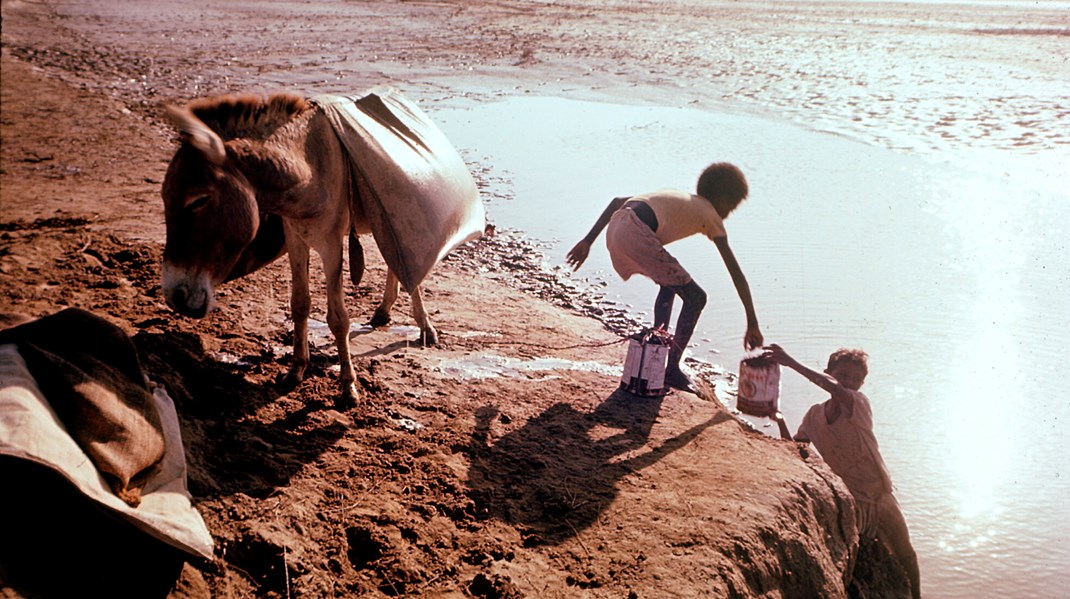Food security deteriorates in South Sudan, affecting 6.45 million people
FOOD SECURITY SNAPSHOT
Overall food security situation continues to deteriorate, with 6.45 million individuals estimated to be food insecure between February and April 2019
Erratic rains at start of 2019 cropping season affected germination of early planted crops
Cereal production in 2018 estimated at record low levels due to widespread insecurity and poor seasonal rains
High food prices constraining access to food for large segments of population
Already dire food security situation continues to deteriorate
Food availability and access continue to be severely constrained by the widespread and protracted conflict, large-scale displacements, high food prices, market disruptions, macro‑economic collapse and exhaustion of households’ coping mechanisms. An earlier‑than‑normal start of the lean season, due to the reduced 2018 crop production, resulted in an increase of the severely food insecure caseload (IPC Phases 3, 4 and 5), from 4.4 million people at the end of 2018 to 6.45 million (about 57 percent of the total population) in the February‑April 2019 period.
The areas of major concern include former Jonglei, Lakes and Unity states, where up to 70 percent of the population is severely food insecure and 45 000 individuals face IPC Phase 5: “Catastrophe”. At the peak of the lean season, from May to July 2018, a further deterioration in the food security situation is anticipated and severe food insecurity is expected to affect 6.87 million people.
Since the start of the conflict in mid‑December 2013, about 1.87 million individuals were internally displaced and 2.28 million sought refuge in neighbouring countries (Uganda, the Sudan, the Democratic Republic of the Congo, Ethiopia and Kenya) due to widespread insecurity and violence. Following some localized security improvements in 2018, the refugee caseload declined by about 10 percent in the last quarter of the year, decreasing for the first time since the start of the conflict in 2013.
Erratic rains at start of 2019 cropping season
With an early onset of seasonal rains, above-average rains were received in the third dekad of February over southern and western cropping areas. However, dry conditions prevailed in the first dekad of March (see precipitation anomaly map), with a negative impact on the germination of early planted crops.
According to the latest Greater Horn of Africa Climate Outlook Forum weather forecast, rains in the remainder of March and up to May are likely to be generally favourable. Above‑average amounts are expected over most of the southern bi‑modal rainfall areas of the Greater Equatoria Region and average precipitations are forecast over the rest of the country. Nevertheless, widespread insecurity and soaring prices of inputs continue to severely affect agricultural activities and a below-average 2019 harvest is likely.
Crop production plunging in 2018 due to conflict and poor seasonal rains
Harvesting of the 2018 main season crops was completed in January. According to the results of the 2018 FAO/WFP Crop and Food Security Assessment Mission, the 2018 aggregate cereal production (including first season crops harvested last July/August), is estimated at about 745 000 tonnes. This output is 2.5 percent down from 2017, about 15 percent below the average of the previous five years and the smallest recorded since the start of the conflict in 2013. As a result, the overall cereal deficit in the January/December 2019 marketing year is estimated at about 518 000 tonnes, 11 percent above the deficit estimated for 2018.
The harvested area slightly increased from the very low levels of 2017 following some localized security improvements, which encouraged voluntary returns of displaced farmers. However, the area remained well below the pre-conflict levels , as the conflict continued to severely affect agricultural activities constraining access to fields. In addition, yields were constrained by a poor performance of seasonal rains over most cropping areas, especially during the second half of the growing season, as severe dryness in July was followed by erratic and below-average rains until October.
Common pests, weeds and Fall Armyworm outbreaks caused some damage on maize and sorghum crops, as most farmers do not have access to pesticides and herbicides, resorting only to traditional practices including manual removal.
Food prices resuming increasing trend in early 2019
In the capital, Juba, prices of sorghum, maize and wheat, surging since early 2016 and at record levels in mid-2018, declined by 30-50 percent in the second semester of the year, mainly due to the appreciation of the South Sudanese Pound following the beginning of the peace talks in June 2018. Increased availabilities from the newly harvested 2018 crops exerted additional downward pressure on prices. Subsequently, prices surged by 15-40 percent in January and February 2019 as the South Sudanese Pound depreciated again. Prices in February were around their year-earlier levels but up to twice the already exceptional highs recorded two years earlier. The high price levels are the result of tight supplies, widespread insecurity hindering market functioning, trade flows and agricultural activities, high transport costs and a weak local currency.
Following a decline in the number of security incidents with the beginning of the peace talks, trade and marketing activities improved in the second half of 2018 in some areas, including the Juba-Nimule road, which connects with Ugandan markets. However, trade activities remain generally lower than their pre‑conflict levels, as insecurity still prevails in several areas.
Disclaimer: The designations employed and the presentation of material in this information product do not imply the expression of any opinion whatsoever on the part of FAO concerning the legal status of any country, territory, city or area or of its authorities, or concerning the delimitation of its frontiers or boundaries. The dashed lines represent approximate borderlines for which there may not yet be full agreement. The final boundary between the Republic of Sudan and the Republic of South Sudan has not yet been determined. The final status of the Abyei area is not yet determined.


